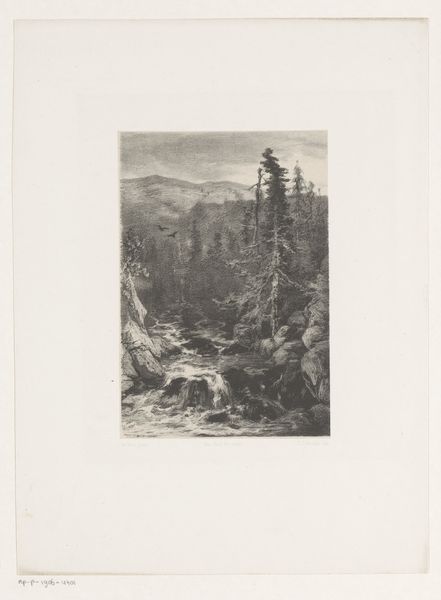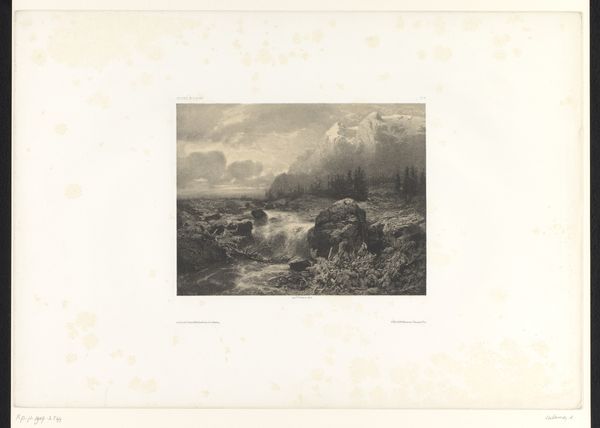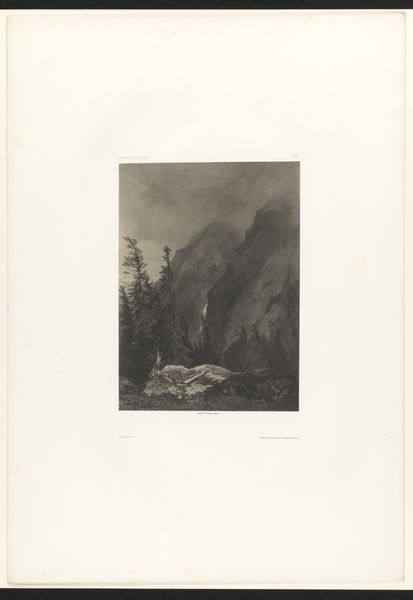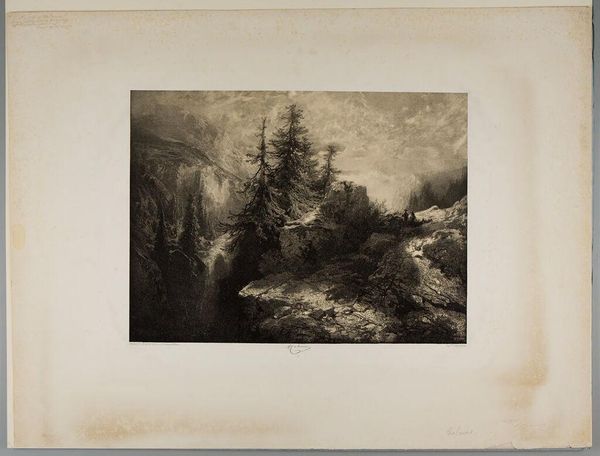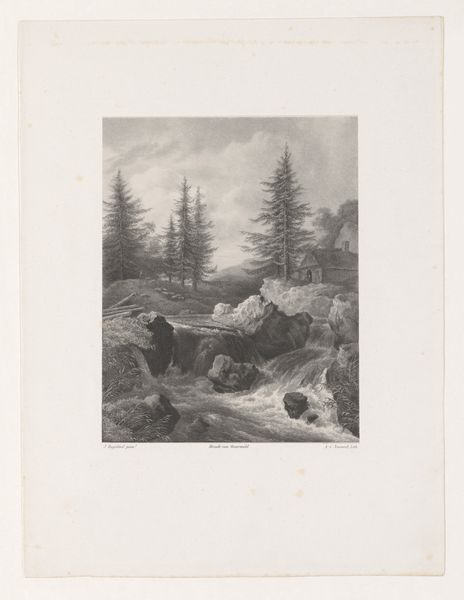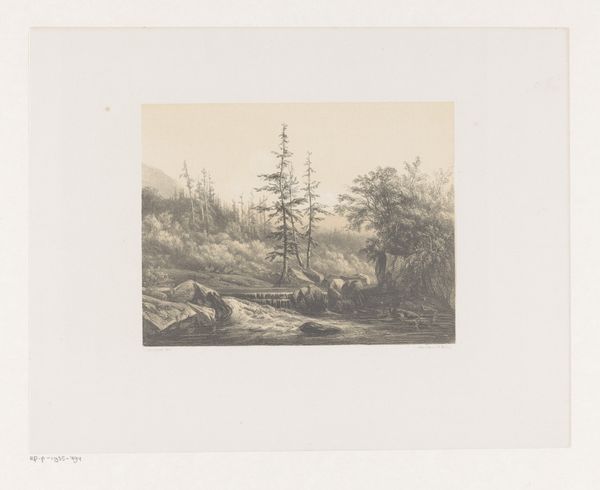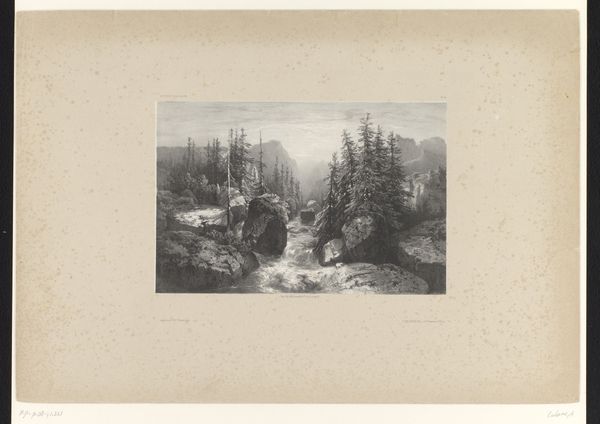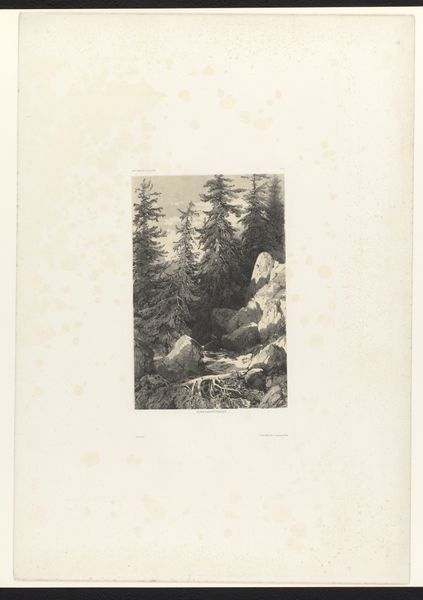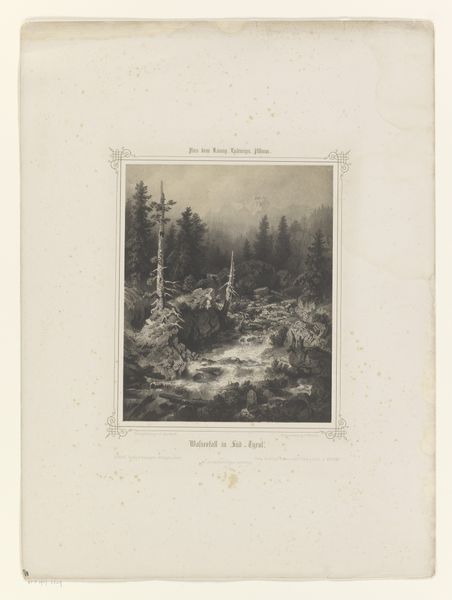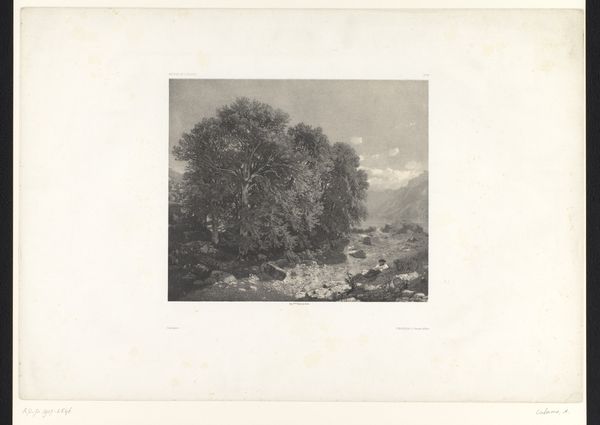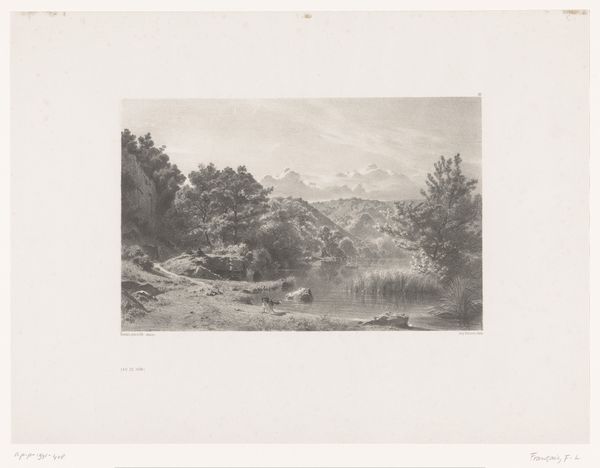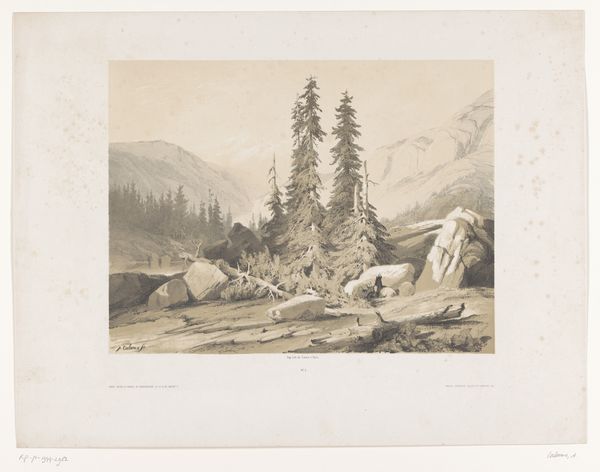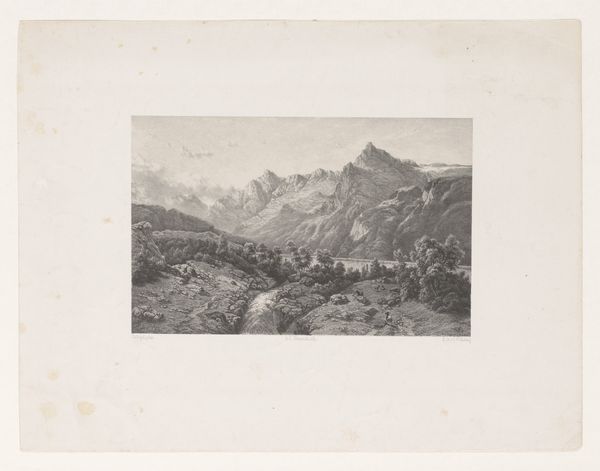
Dimensions: height 390 mm, width 558 mm
Copyright: Rijks Museum: Open Domain
Alexandre Calame composed this landscape with etching around the mid-19th century. Dominating the scene are the imposing fir trees, symbols of endurance and the sublime power of nature. In Romanticism, trees represent the link between the earthly and the divine, echoing the ancient reverence for sacred groves. Consider, too, how the fallen tree trunk across the stream serves as a memento mori, a reminder of life's transience amidst the eternal cycle of nature. This motif recurs throughout art history, from classical vanitas paintings to contemporary photography, each time imbued with the cultural anxieties of its age. The mountain stream, a classical symbol of renewal and the passage of time, carves its way through the landscape. In contemplating this image, one cannot help but be drawn into the emotional and psychological depths of nature, reflecting a deep-seated human desire to find meaning in the chaos of existence. This landscape is not merely a representation of nature, but a mirror reflecting our collective subconscious, our fears, and our hopes.
Comments
No comments
Be the first to comment and join the conversation on the ultimate creative platform.
